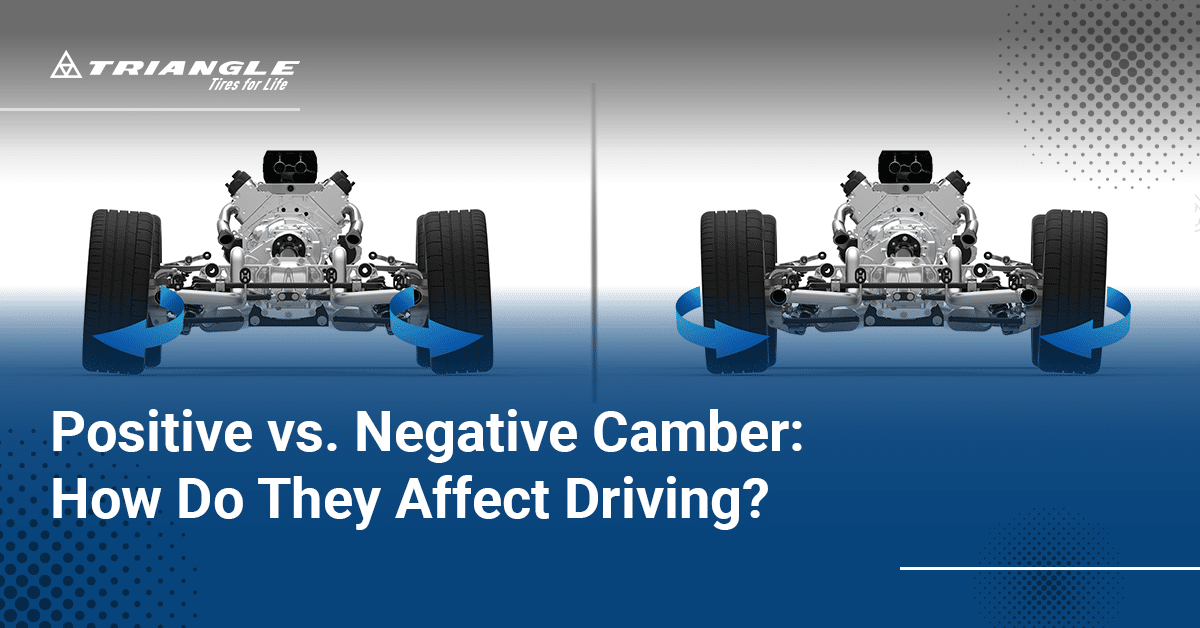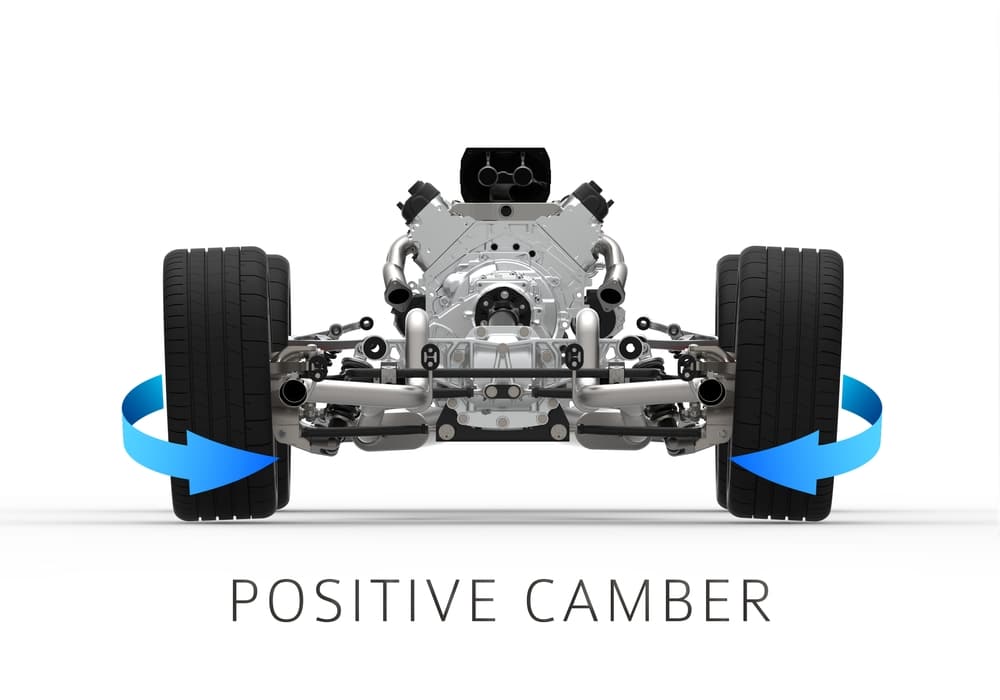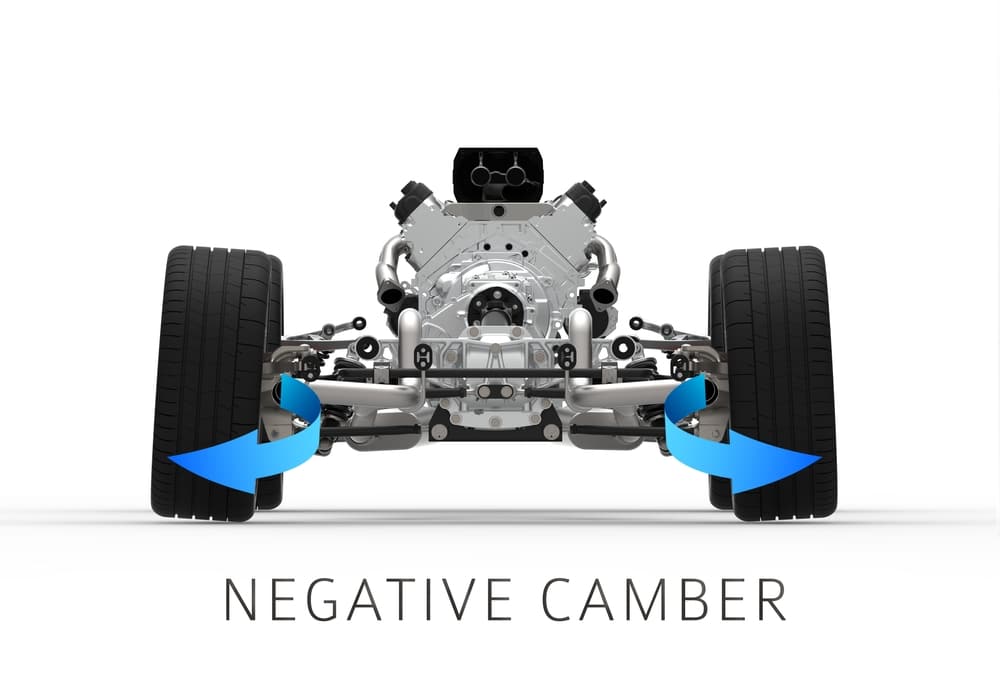
Drivers use the term “camber” when discussing vehicle performance and handling. However, it may sound daunting if you’re a new driver or car enthusiast. What complicates matters further is the terms “positive” and “negative” camber.
What exactly is camber, particularly positive vs. negative camber, and how can each affect your driving? This blog post aims to answer your questions.
What is Camber?
Camber refers to the vertical tilt of a vehicle’s wheels when viewed from the front or rear. Contrary to popular belief, it’s normal for wheels not to be totally perpendicular to the road, especially when driving into corners. Camber significantly influences a vehicle’s handling characteristics and tire wear patterns. Properly aligned camber angles ensure smooth car performance and a safer ride.
There are two types of camber angles—positive and negative—each helping vehicles perform specific tasks.
What is Positive Camber?

Positive camber is when the top of the wheel tilts outward, away from the vehicle’s center. This configuration improves a car’s stability and handling on uneven terrain. This setting is ideal for heavy-duty vehicles such as trucks or tractors.
However, excessive positive camber can cause a vehicle to drift, making it difficult to drive within a lane. It can also accelerate wear on the front tires’ outer edges, significantly shortening their lifespan.
What is Negative Camber?

Negative camber involves the top of the wheel tilting inward toward the vehicle’s center. For many reasons, most car manufacturers set a negative camber in modern models. First, this setup improves handling and road grip, providing an equal load throughout the contact patch. It also minimizes tire vibration and allows for better cornering at high speeds.
Similar to positive camber, excessive negative camber poses many risks. It can lead to oversteering and make a vehicle move toward any road irregularities or bumps. It can also quickly wear a tire’s inside shoulder.
How Does Camber Affect Driving?
Understanding how camber works can help you learn more about your vehicle’s dynamics and performance and fix it should your tires fall out of alignment. Here are ways that camber can affect your driving.
Cornering
Of the two camber types, negative camber offers better turning and cornering. It maximizes the tire’s grip and contact area while navigating turns, allowing for improved stability and enhanced cornering ability. It also counteracts the tire’s natural tendency to roll onto its outer edge during cornering, ensuring a larger contact patch and optimal traction.
On the other hand, positive camber negatively affects vehicle performance during cornering. It reduces grip and compromises handling in tight corners, resulting in less control, decreased stability, and compromised overall cornering capability.
Straightaways
If you typically drive heavy-duty vehicles on uneven ground, you’ll benefit more from positive camber because it offers greater stability and improved traction. It provides a larger contact area between the tire and the road surface, giving you better vehicle control when driving in a straight line or on a highway.
Meanwhile, negative camber naturally propels a vehicle toward its midline, decreasing its stability when driving in a straight line. It can also lead to unintentional turning and tramlining, which is when a car follows the contours of the surface it traverses.
Steering control
Positive camber reduces steering effort, making vehicles easier to maneuver on challenging or uneven roads. The outward tilt of the tire’s top allows for a larger tire contact patch, increasing stability. The only downside to this effect is that it reduces grip and responsiveness, resulting in a less precise steering feel and decreased control over the vehicle.
On the other hand, negative camber can provide more steering control, particularly when cornering. The inward tilt of the tire’s top increases the contact area, enhancing the grip and allowing for more precise and responsive steering inputs. This effect can improve cornering performance and achieve greater control while navigating turns.
However, extreme negative camber can wear tires, particularly on their inner edges, and compromise straight-line stability. It can create a less stable driving experience in a straight line or during high-speed situations.
Keep Your Tires Aligned for a Smoother Ride
Tires play an essential role in every vehicle. As such, you must calibrate them to the proper camber angles for a smoother and safer ride. With a basic understanding of camber and its two types, you can immediately address possible issues. As a safety measure, consider testing camber angles during a track day to test your car’s limits in a controlled environment.
Then, only use quality tires, such as those from Triangle Tires. We deliver affordable tires for passenger cars, light trucks, and heavy equipment vehicles. Browse our tire catalog or contact us for your tire needs.